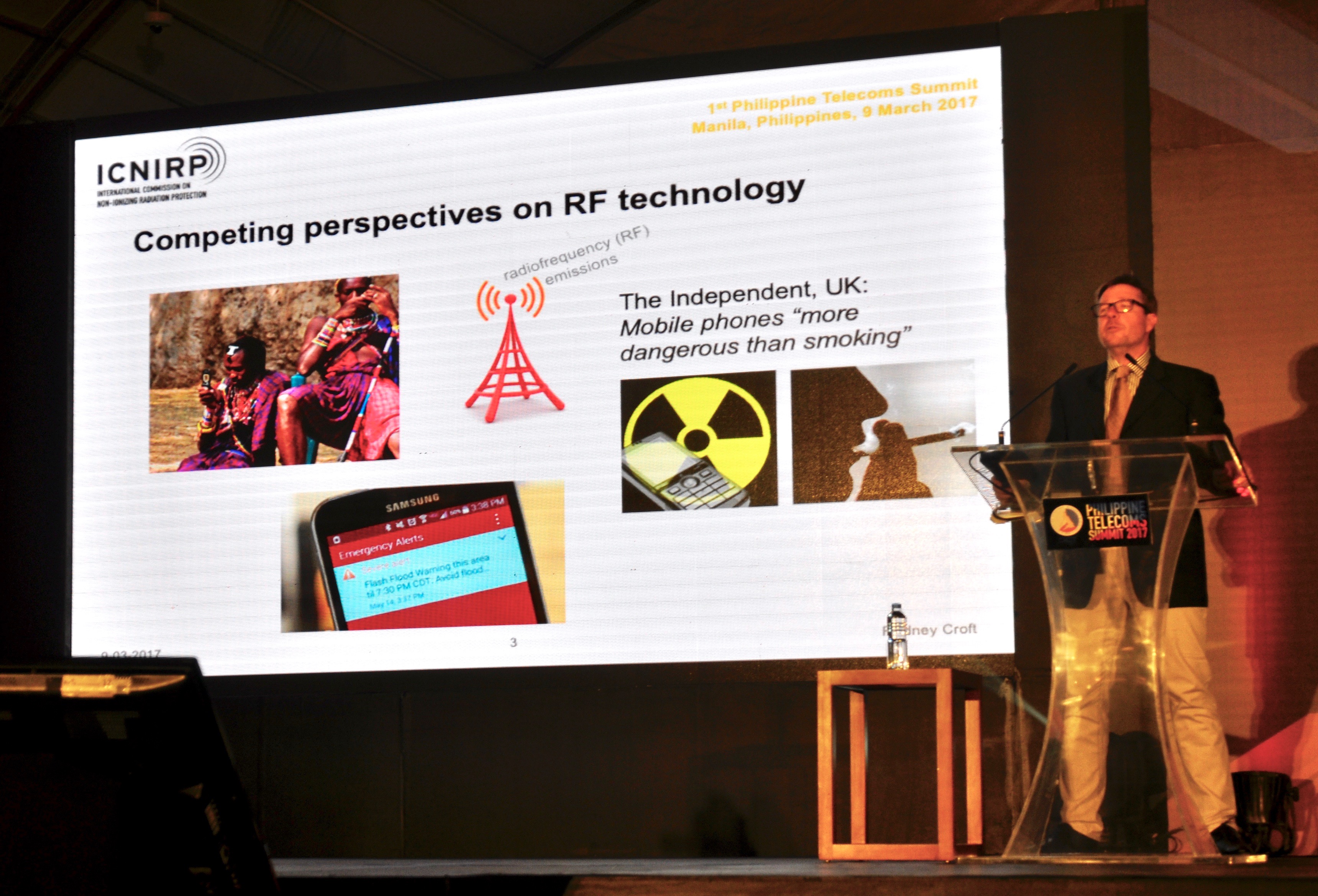‘Cell towers are safe’: Human brain specialist offers insights on RF radiation

Dr. Croft’s talk tackled the myths of harmful RF radiation from cell towers and disproved them with hard data from ICNIRP’s extensive studies. Image: Alfred Bayle
There has been a long-standing debate regarding the health effects from radio frequency radiation exposure, and the need for more cell sites to improve internet service around the country. These issue, among others, have effectively hampered efforts to extend coverage in residential areas.
A specialist from the International Commission on Non-Ionizing Radiation Protection (ICNIRP) organization, gave a brief talk at the Philippine Telecoms Summit 2017 last Thursday, aiming to set the record straight that cell towers are not detrimental to the health of homeowners.
Ironically, as the talk revealed, these same homeowners who complain about bad internet service are the same ones who refuse to have more cell towers erected.
Dr. Rodney Croft, chairman of the ICNIRP High-Frequency Guidelines Project Group and an expert on the delineation of human brain function as affected by agents such as radiation or drugs, outlined the extensive studies conducted by ICNIRP and the safety guidelines that have resulted from their gathered data.
As it stands, ICNIRP guidelines determine the lowest value of radio frequency (RF) radiation that would affect human health. These guidelines also establish basic safety limits. These basic safety limits are then further reduced to such low levels, so as to make RF radiation negligible and more or less unable to adversely affect human health.
Point in fact: a cellphone that is far from a cell tower would actually emit more RF radiation in an attempt to establish and stabilize the signal coming from the cell tower. And yet even at this level of RF strength, the most that can affect human health is a little bit of transmitted heat. According to ICNIRP’s data, there has been no recorded evidence of adverse effects from being near a cell tower apart from getting really good signal and faster internet.
Additionally, the construction of more cell towers within a given area will not have a cumulative effect with regards to RF radiation emitted. In other words, RF radiation will still remain negligibly low despite the number of cell towers. This set up will even help cellphones save power because devices will no longer work so hard to get a signal.
Currently, there are far too few cell sites and towers to accommodate the increasingly growing demand for faster as well as more reliable mobile internet service. Ideally, by laying health concerns to rest, telcos will have more leeway to build additional facilities to make good on their promise of better internet service for the country. JB